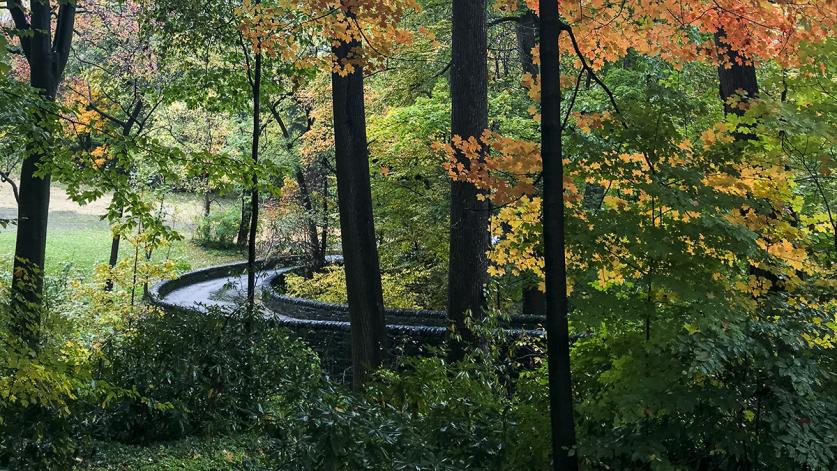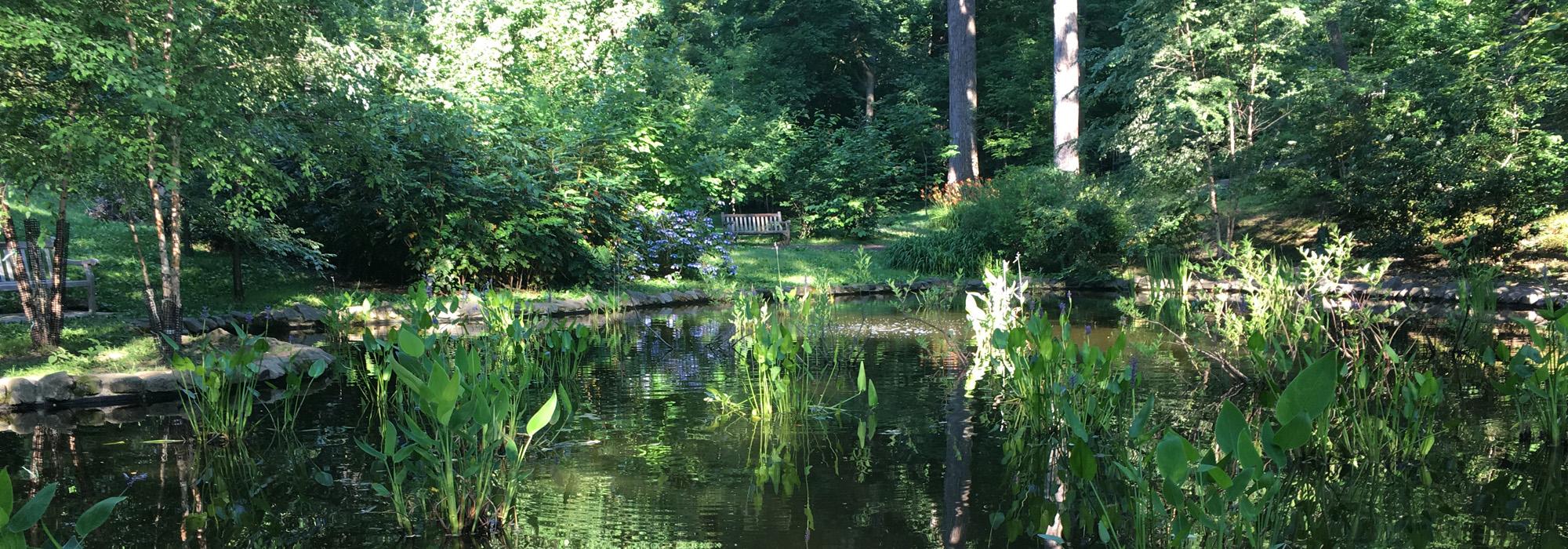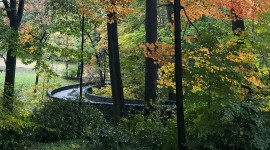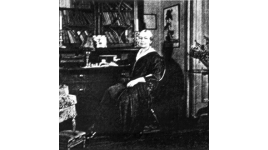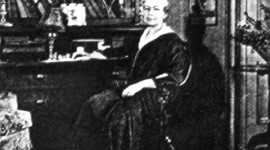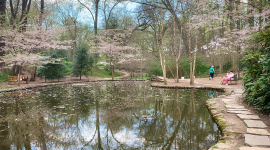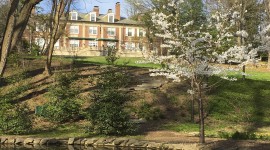Tregaron Estate: Update on a Former Landslide Site
Designated an at-risk Landslide site by TCLF in 2006 due to the threat of redevelopment, the Tregaron Estate is a twenty-acre Country Place Era house and garden located on the edge of Rock Creek Park in Washington, D.C. Over the last decade the landscape’s fate has improved considerably, in large part due to the forming of a non-profit stewardship organization, the Tregaron Conservancy. The non-profit recently hired a new Executive Director, Lynn Parseghian.
History and Background
The land comprising Tregaron was acquired in the 1880s by Gardiner Greene Hubbard, founder of the National Geographic Society. Hubbard subsequently divided the property between his two daughters, one of whom married Alexander Graham Bell. The Bells never resided there, selling the land to James Parmelee, who named it “The Causeway.” In 1912, Parmelee hired architect Charles Platt to design a Beaux-Arts estate. Platt designed the main residence and approach, and employed his mentee, Ellen Shipman, to design the gardens and surrounding woodlands.

In 2006, following years-long efforts by a developer to build houses on the Shipman-designed woodland portions of the estate, a settlement was reached under which the thirteen acres in question were donated to the newly-formed Tregaron Conservancy, to be preserved in perpetuity. The landscape design is one of the few remaining examples of a naturalistic garden by Shipman, “the dean of American women landscape architects,” and one of only three extant collaborations between Shipman and Platt in the United States. Tregaron is designated a Historic Landmark by the District of Columbia, and listed in the National Register of Historic Places.
Restoring the Landscape
Tregaron consists of a mansion atop a steeply sloped hillside, overlooking formal gardens and woodland, with the city beyond. From the back terrace of the house, visitors encounter sweeping views of the property, which is traversed by bridle and woodland paths. Shipman’s design “articulated the genius loci of the site by emphasizing the watercourse, celebrating the dappled sunlight through the trees, and calling attention to the rich seasonal color of the regional landscape.”
The landscape fell into a state of profound neglect during the latter half of the twentieth century: the woodlands became engulfed in overgrown, invasive plant material; the extensive system of footpaths became unrecognizable due to erosion and fallen trees; and the streams were silted in, while a lily pond devolved to a mud pit filled with debris.
In its initial years, the Conservancy was faced with the daunting task of stewarding this severely degraded landscape. As landscape historian Thaisa Way and Steve Callcott, now Deputy Historic Preservation Officer for the District of Columbia, noted in 2009, “[t]he rehabilitation of woodlands and wild gardens is a relatively new area for landscape preservation…. The challenge” for the Tregaron Conservancy “[lay] in conserving the plantings, restoring the circulation systems and aesthetic experience, rehabilitating ecologies, and interpreting the place as a designed/wild garden.”
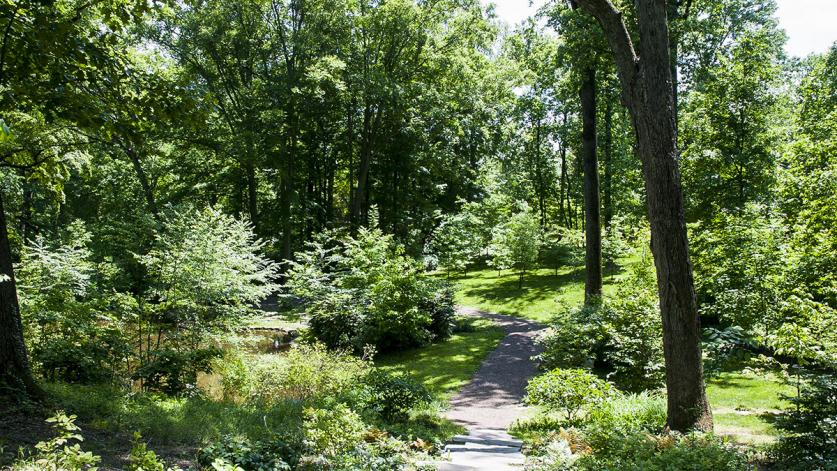
To guide their work, the Conservancy consulted with the District’s Historic Preservation Office, and commissioned a Cultural Landscape Report (CLR) by Heritage Landscapes. The CLR, completed in 2007, identified six “character areas” of the landscape from the Platt/Shipman era and their key defining features, offering recommendations on the landscape restoration and rehabilitation of those areas.
The Conservancy has made substantial progress in implementing the CLR’s key recommendations by restoring century-old stone stairways, bridges and walls, re-establishing the extensive network of footpaths, and removing dead trees and shrubs, as well as invasive vegetation. Furthermore, the Conservancy rehabilitated the lily pond, incorporating a Shipman-inspired aquatic plant design. More recently, the Conservancy installed a new gate at one of its entrances, including historically accurate iron fencing.
The Conservancy’s initial preservation and stewardship work has garnered national attention. The Conservancy has received several grants from the National Trust for Historic Preservation, including a grant in October 2016 from the Dorothea de Schweinitz Fund for preservation planning work, with a focus on sustainability. In 2015, the National Trust’s annual PastForward Conference featured a field study/workshop presented by the Conservancy and the Washington International School.
What’s Next
In honor of its tenth anniversary this year, the Conservancy launched a Native Grass and Wildflower Meadows Restoration project. Tregaron features two major turf areas that, until very recently, were bounded by large swaths of invasive grasses, vines, and woody plants. The goal of this project is to transform these overgrown areas into meadows consisting of native grasses, sedges, and wildflowers that are consistent with Shipman’s design. Native shrub edge treatments will aid in defining the meadow and creating a naturalistic transition to the woodlands. Next month the meadow’s designer, Larry Weaner Landscape Associates, will supervise the initial seeding. Once the meadow is established, the Conservancy will plant live wildflowers with its volunteer corps, and restore the historic footpaths. Forthcoming projects include updated mapping, new interpretive and way-finding signage, and additional “wild garden” installations.
The Tregaron landscape is open to the public every day, free of charge. It is a place of serene respite and historic resonance in a busy urban setting. The conservancy recently hired a new Executive Director, Lynn Parseghian, who expresses optimism about its future: “We have ambitious plans for the Conservancy’s second decade, inspired by Shipman’s genius, by our visionary founders, including Bonnie LePard, and by our many supporters and friends. Working under the guidance of preservation landscape architect/planner Glenn Stach and our landscape designer, Tamara Belt, we intend to recapture Shipman’s vision for Tregaron’s landscape for the benefit of our visitors and future generations.”
